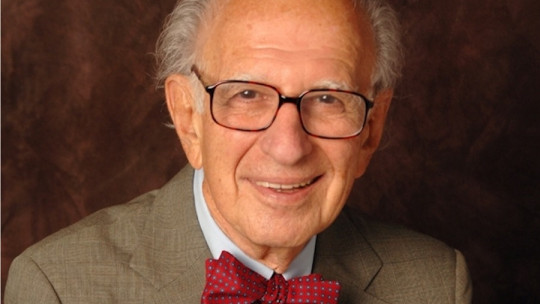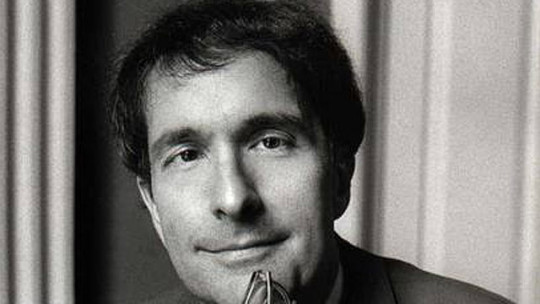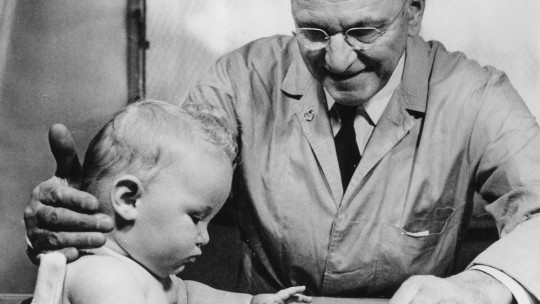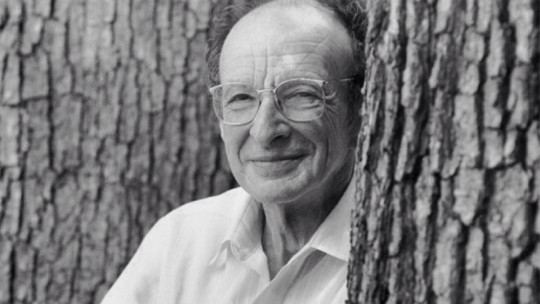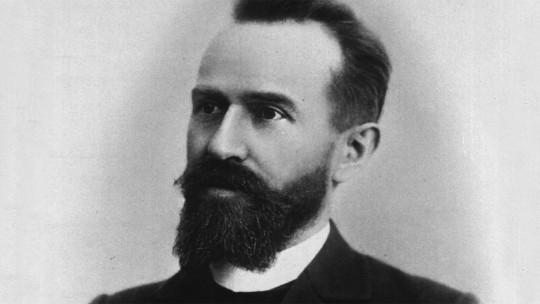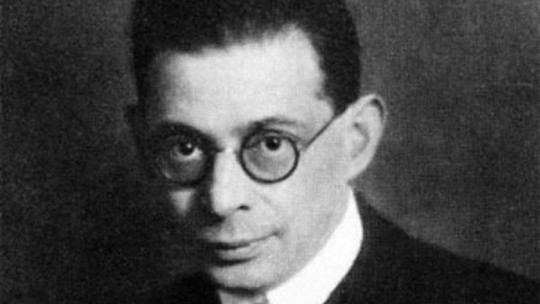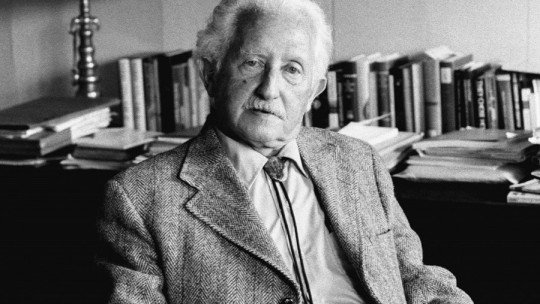
Erik Erikson was the father of the theory of psychosocial development, which postulated that each human stage entails a series of obstacles and conflicts that the person must successfully manage in order to develop satisfactorily. His experience as a teacher at the Hietzing School had a lot to do with his work, where he met great personalities, including Anna Freud.
In this biography of Erik Erikson we tell you about the career of this psychologist and his contributions to the field of education and child development.
Brief biography of Erik Erikson
The origin of Erik Homburger Erikson, a German-American psychologist famous for his contributions to developmental psychology (and especially to the identity crisis of adolescence), is as uncertain as it is curious.
In fact, Erikson was not even his real last name, and the truth is that, no matter how much he asked his mother who his father was, she never wanted to tell him.
Conflicting and uncertain origins
Karla Abrahamsen, a Jew belonging to a wealthy family in the city of Copenhagen, had married a certain Valdemar Salomonsen, but he was not little Erik’s biological father. A few days after the wedding, Salomonsen left for America, and Karla did not see him again. She rebuilt her life and became pregnant, although she never revealed the name of the father of her child.
Scandalized by their daughter’s “immoral” behavior, Karla’s family sent her to Frankfurt, where Erik was born. For some years, Karla raised her son as a single mother, because, although she was still married to this Valdemar, he never returned from overseas. She also never heard from the biological father of her son again.
Later, once she found out that her husband had died, Karla married the pediatrician who had cared for Erik during his illness when he was three years old, Dr. Theodor Homberger, and the new family moved to southern Germany. ; specifically, to Karlsruhe. Theodor acted as a father to little Erik, and he did not know the truth until he was eight years old. Despite everything, in the face of the boy’s insistent questions about her biological father, Karla remained silent.
Erik’s relationship with his mother was always quite good, as he shared with her a certain sensitivity and love for art and philosophy We know little about his father, Dr. Homberger, since Erik almost never mentions him in his texts. We can deduce that the relationship with this new father (after all, the only one Erik had ever known) was not particularly good.
The bohemian youth of Erik Erikson
Young Erik’s early years were characterized by a certain rebellion; Following his deep desire to be an artist, the boy toured Europe living practically as a homeless man (they say he slept on the street and under bridges and survived with the secret pension that his mother sent him behind Homberger’s back). At this point, the relations between the adoptive father and young Erik had deteriorated considerably, since the former did not understand the irresponsibility that his son showed towards life.
After a year of bohemianism in Europe, Erik returns to Germany and enrolls in an art school in Munich However, the walls of a school did not seem to suit our artist, as we later found him wandering again, this time through the streets of Florence. It is at this time that Erik deeply questions his future as an artist, and the conclusions he reaches make him fall into depression.
An unexpected turn
Peter Blos was an old classmate of Erik’s, with whom he had shared studies at the Gymnasium, a place where our character was imbued with classical art and culture. Aware of Erik’s important notions of art and history, Blos invited him to be part of the curriculum of the school that he had just created together with Dorothy Burlingham and Anna Freud, the daughter of the famous psychoanalyst. It is likely that this offer brought Erik out of the depression in which he was immersed: he would not be an artist, but at least he would teach art.
The educational experiment, founded in 1927, was called the Hietzing School, and it put Anna Freud’s psychoanalytic ideas into practice on children. Erik Erikson was the teacher of the school’s humanistic subjects, but Little by little his contact with Anna and the rest of the Freud family made his interests turn towards psychoanalysis and, especially, in child behavior.
His interest in psychology and psychoanalysis led him to obtain a certificate in Montessori education and one from the Vienna Psychoanalytic Society. The former aspiring artist had finally found his true calling.
In 1929, Erik met Joan Serson, a young Canadian who was in Vienna studying, at a masked ball. The crush was instantaneous and the two young people soon moved in together. However, when Joan discovered that she was pregnant, Erik refused to marry her. Finally, probably because of the pressure that the trauma of not knowing his biological father exerted on his psyche, he consented to marry and give his surname to the child Joan was expecting.
His move to America
The years in which the couple taught at the Hietzing School were happy. But in 1932 a black shadow began to spread across Germany. The arrival of the Nazis was sensed and Erik feared for the safety of his family. Therefore, the following year, Just after the Nazi party came to power, Erik, Joan and their two children left for the United States and settled in Boston
In America, Erik made his living as a child psychoanalyst, as well as as a professor at Harvard Medical School. In those years he met the anthropologists Ruth Benedict and Margaret Mead, as well as the psychologists Henry Murray and Kurt Lewin, whose theories influenced his work.
Psychosocial development according to Erikson
Erikson is especially known for his theory of psychosocial development, formulated in the 1950s, in which The psychologist establishes that each period of human development presents a series of obstacles and challenges If the person manages to successfully resolve each stage (called by Erikson “identity crisis”), his or her life development will be satisfactory.
According to Erikson, these periods would be eight, which we can summarize as follows:

